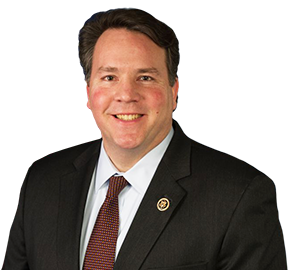WHEELING — Public hearings to discuss West Virginia’s political redistricting are expected to happen later this summer — well before state lawmakers are expected to receive the data they need to draw new district maps.
Lawmakers won’t start on the new political map until they get pertinent population data from the U.S. Census Bureau, which isn’t expected to arrive until at least late August. And mandated public hearings regarding redistricting actually will take place before that time at locations throughout the state, according to local legislators.
Senate Majority Whip Ryan Weld, R-Brooke; House Minority Whip Shawn Fluharty, D-Ohio; and Delegate Erikka Storch, R-Ohio, all have been named to the Legislature’s Select Committee on Redistricting.
The committee is charged with creating new political districts for the U.S. House, and state Senate and House of Delegates representation in West Virginia.
West Virginia is expected to lose one of its three Congressional seats before the 2022 election, and the state’s 67 delegates will be increased to 100 single-member districts.
Members face a deadline of getting new maps completed by the end of 2021 so prospective candidates may file for election to these seats in January.
“The challenge is we don’t have data yet,” Weld said. “From what I understand, normally we would have had that by now. We would have received it in the spring and had the population data that would allow us to draw lines appropriately.”
He expects data to determine Congressional districts will arrive in mid-August, while House and Senate data won’t come until Sept. 1.
As part of the process, the redistricting committee will host at least a dozen public meetings across the state, and these likely will be scheduled for later in the summer before the population data arrives, Weld said.
“We will work through the process with the public, getting their thoughts about the way they think their district should be drawn — (state) House and Senate and (U.S.) Congressional,” Weld said.
Having the public hearings beforehand will give the committee a chance to hear comments from state residents who say their neighborhood would better identify with their representation if their district were reconfigured differently.
“We can get feedback, but we won’t be drawing the maps before the hearing,” Weld said. “The maps will be driven by the data we receive.”
Storch said she expects a public hearing will be held in the Wheeling area, but no date or location has been selected.
“It will give us an opportunity to hear the concerns of the constituents, and after that we hope to have a clearer picture,” she said.
Storch expects most of those attending will want to speak most about Congressional redistricting.
“There are some people out there who believe the Congressional districts should divide the state north to south, and there are others who firmly believe it should be drawn east to west,” Storch said. “But it all comes down to what’s best for Northern Panhandle representation and that we have an advocate from our area of West Virginia.”
She noted the three Republican incumbents who represent West Virginia in the U.S. House — David B. McKinley in the 1st District, Alex Mooney in the 2nd District; and Carol Miller in the 3rd District — have never had to run against each other.
“Two will likely have to (next year),” Storch said.
Storch and Fluharty live in the same Woodsdale neighborhood, but Storch isn’t so certain lines can’t be drawn to create separate districts for them.
“We are in different voting precincts, and different census blocks,” she explained. “It will be difficult for people who voted for us both when they don’t see both of us on the ballot. People largely know its coming, but it still will come as a shocker to many in 2022 that you may only see one of us on your ballot.”
Storch served on the redistricting committee following the 2010 Census in 2011. It will be the first time there for Weld and Fluharty.
“It bodes well for Ohio County that Erikka and I are both on the committee,” Fluharty said. “My understanding is that we are in different voting precincts.
“While we live technically close, the map should be data driven. It shouldn’t be a determination based on human factors.”
The issue with redistricting is going to be the time crunch, Fluharty said.
“I agree you would want the input first, but you also want to make sure the lines are drawn independently so there are no court challenges,” he explained. “The incentive to get this done in a manner not influenced by elections and partisanship.
“Ideally, you would get the data then have public hearings. But we’re up against a time crunch.”
He believes the goal is to have the maps decided by November. There will also be residency requirement questions regarding how long a candidate must have lived within the newly created district before running for office, according to Fluharty.
“My question is how are Republicans going to draw a map when they have 78 members (in the House of Delegates)?,” Fluharty asked. “We will have 100 single districts being drawn by Republicans who represent nearly 80% of the state.
“I would like to be a fly on the wall during those discussions,” he said.

